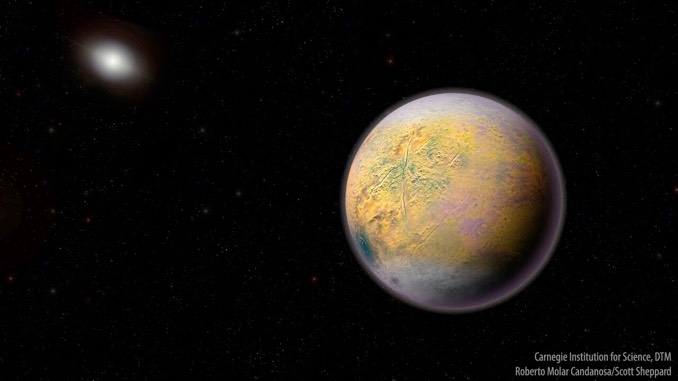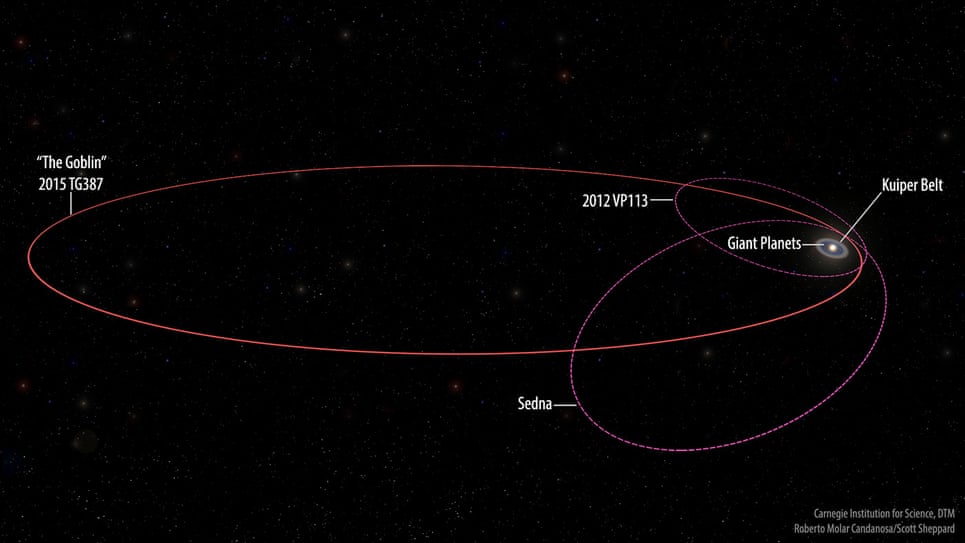'The Goblin' dwarf planet - Unlocking mysteries
2015 TG387 - 'The Goblin'
A recent buzz in the media has been focused on an observational spectacle that was sighted back in 2015: The confirmed discovery of a dwarf planet on the outskirts of our Solar System whilst searching for possible new, undiscovered objects in the Solar System. It was discovered by a team of researchers, led by Scott Shepard of the Carnegie Institution for Science, using the Subaru Telescope in Hawaii. The announcement of some of the dwarf planet's key features, such as its orbital period around the Sun, has inspired some interest in the mysteries of the outer Solar System.

Facts about The Goblin:
- It has been measured to be approximately 190 miles in diameter. This means that Pluto is almost eight times the diameter of the new dwarf planet, so it is incredibly small.
- The Goblin's extremely elongated elliptical orbit takes around 40,000 years to complete.
- At it's closest (the perihelion), The Goblin lies ar a distance around 65AU (1 Astronomical Unit = 1 Sun-Earth distance) from the Sun. For reference, Pluto at its farthest (aphelion) distance from the Sun is around 50AU.
- The Goblin's aphelion distance is roughly 2,300AU.

Considering what we know about this dwarf planet, the chances of spotting it in the first place were extremely rare. “Currently we would only detect 2015 TG387 when it is near its closest approach to the Sun. For some 99 per cent of its 40,000-year orbit, it would be too faint to see,” said David Tholen at the University of Hawaii in a statement.
What has this discovery told us?
The nature of The Goblin's orbital shape and period have not confirmed, but have favoured the theoretical presence of the super Earth 'Planet X', residing at the edge of the outer Solar System.
Theoretical predictions of planets have been made before their discoveries many times (mostly exoplanets), but one of which being in relatively close proximity: Neptune. The application of Kepler's laws of gravitational influences between a number of bodies is an extremely powerful tool in helping astronomers predict the presence of celestial objects before they are actually found.

